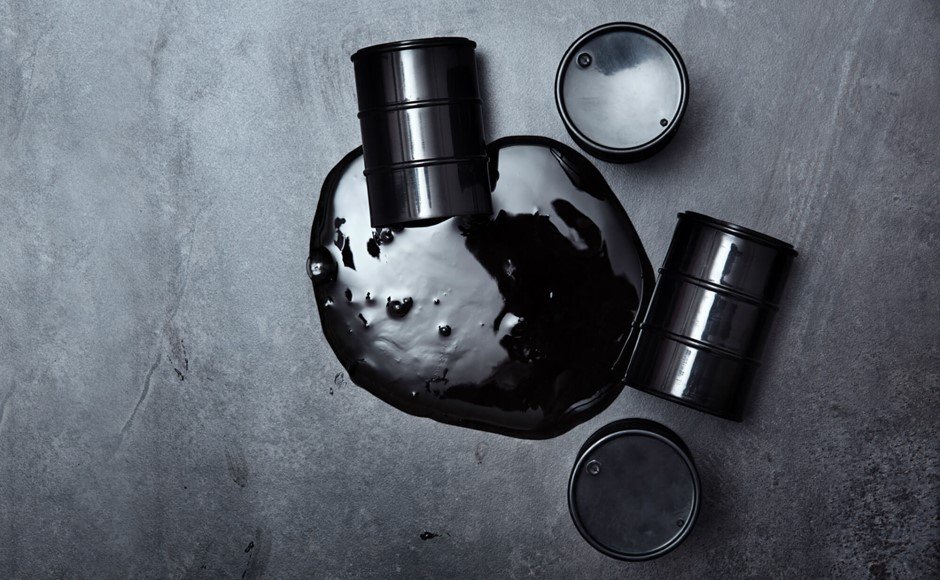We depend heavily on oil and chemicals in various parts of our lives and our work, but these commodities pose a substantial risk to our health and safety and also carry the potential to do damage to the environment. While spilling any of these on the ground presents its own set of problems, the biggest concern is preventing them from entering waterways. Whenever we store and process these materials, we need a plan to prevent spills from occurring, as well as a plan of action to minimize the damage if our spill prevention methods fail.

Takeaway: Secondary spill containment measures are never perfect and many will fail. It’s important to take this potential failure into account by including adequate countermeasures in your SPCC plan.
This kind of backup plan is not an extra step – it’s an essential one. Spill containment failure is a daily reality throughout the globe. The BP Deepwater Horizon oil spill that occurred in 2010 and spilled 4.9 million barrels of oil into the Gulf of Mexico was by far the largest marine oil spill, but in many ways, it was neither exceptional nor unique. In fact, about 700 million gallons of oil enter our oceans each year, and over half of those gallons come from land-based sources. And this is the figure for oil, which means it excludes every other type of hazardous chemical that finds its way into the water.
If your company houses or processes oil or chemicals, this article is for you. We’ll cover what you need to know about spills, how to prevent them, and what to do when the prevention methods aren’t enough.
Types of Spills
Not all spills are equal. OSHA’s Hazardous Waste Operations and Emergency Response (HAZWOPER) standard classifies spills in two categories:
- Incidental spills do not pose a significant health and safety risk to the workers or cleanup crews
- Emergency spills are hazardous to employee health and safety and could become an emergency within a short time frame
The severity and the likelihood of a spill will dictate your approach to spill response. Emergency spills will naturally involve a higher degree of planning and greater resources than incidental ones.
Primary and Secondary Containment
The receptacles that hold the hazardous chemical until needed for use, such as drums, totes and different classes and sizes of tanks, all constitute primary containment (Learn more about:- What is the Difference between Primary and secondary Spill).
- Transformers
- Gray water
- Oil and oil derivative tanks
- Pesticide storage
- Transloading points
- Washing stations
Passive and Active Containment
Depending on the nature and quantity of the spill, we could employ either active or passive spill containment measures.
Active Secondary Containment Measures
Active secondary containment measures rely on a person physically deploying and engaging them, either proactively (before starting work that might result in a spill) or reactively (after a spill has occurred). Active containment measures include drain covers, different types of absorbents (socks, booms, pads, “kitty litter”), and retractable containment walls.
Since these active measures depend on a person to deploy them, it is a good idea to pair them appropriate administrative controls, such as practices, procedures, and training. Proactive measures should be included in the practices and standard operating procedures. Reactive measures should be tested through regular training and drills to ensure that employees are ready to respond after a spill has happened and stress levels are running high.
Secondary spill containment prevents hazardous liquids from polluting the soil and water by containing them within a controlled area. Secondary containment measures include, among others, spill pallets, concrete barriers, walls, dikes and berms.
Though the list is practically endless, here are a few of the assets, facilities and operations we should protect with secondary containment:
Passive Secondary Containment Measures
Passive secondary containment measures do not rely on someone actively deploying them. Because of this, no training needs to be delivered and no standard operating procedures need to be developed to contain the spill.
Spill pallets, sloped floors, berms, and dikes are the most common passive secondary containment methods.
Generally, passive containment is designed to contain worst-case scenario spills, such as a hole in an oil tank. For this reason, the SPCC requires secondary containment to be “sized,” meaning that it should be able to contain either 10% of the volume of all containers or 100% of the volume of the largest container, whichever is greater.
Passive containment is easy to build and manage when it is considered and implemented right from the building stage of the project. However, many facilities, such as substations and tanks, were built before the Clean Water Act and other regulations governing spills came into effect. As a result, these structures do not have passive spill containment. To keep them in operation, they require retrofitting, which is usually time-consuming and costly. The PE-stamped and approved SC-3900 Containment Wall System by Justrite alleviates these problems by building directly over earthen substrates and around existing facilities (substations, transformers, fuel tanks, and so on). This allows a 50 to 75% faster completion time compared with other systems, while meeting secondary fuel containment requirements.
Hazards of Spill Containment
Once these hazardous substances are out of their primary container and into the secondary containment (or running free towards a watercourse), they will present a series of risks to employees, first responders and the general public.
Here is a (by no means exhaustive) list the hazards you might encounter as the result of a spill:
- Fire and Explosion: Many of these substances are flammable and have a low flash point. If the volatile concentration is between the Lower Explosion Limit (LEL) and Upper Explosion Limit (UEL), the material will explode.
- Hydrogen Sulfide (H2S): Any H2S contained in the oil and oil derivatives can be released from the solution once the substance is out of the tank. Exposure to H2S can result in severe healthy issues and can potentially be fatal. .
- Toxicity: Many chemicals are toxic and can enter the body through inhalation, absorption, contact, and ingestion (although this last one is less likely). Depending on the chemical and the degree of exposure, it can lead to chronic illness, dermatitis, and a host of other conditions.
- Burns: Alkali and acids can cause severe burns, either through direct contact with organs (skin, eyes) or, as volatiles, when combined with bodily fluids from the eyes or lungs.
- Physical Injury: Some chemicals are slick and will present an elevated risks of slips and falls.
- Runoff: Gravity will cause liquids to settle in a lower area, which will likely bring them to drains, storm water ponds, or bodies of water, resulting in water pollution.
Controls
The hierarchy of hazard controls involves elimination, administrative controls, engineering controls, and PPE.
Since we’re discussing containment, we’ll assume that eliminating the use of the hazardous substance is not a possibility.
Your administrative controls will be the active containment methods we discussed above. These will include safe operating procedures, training, and drills. Several regulatory agencies also require you to implement a spill prevention, control, and countermeasures (SPCC) plan that clearly details the responsibilities, procedures, training, and controls to be deployed during spill response.
Your engineering controls are the passive containment measures you’ll implement to ensure that the effects of spills are minimized.
That brings us to PPE. The PPE used in spill control has to be adequate to the hazards presented by the substance being cleaned. Depending on the material and the extent of the spill, the PPE could be as simple as a pair of protective gloves or as elaborate as a full HAZMAT suit including an SCBA or SABA respirator.
Regulations Governing Spill Containment
EPA
The two pieces of legislation form the Environmental Protection Agency (EPA) that pertain to spills are the Clean Water Act (1972) and the Oil Pollution Act (1990).
The Oil Pollution Act includes two sets of requirements, the Spill Prevention, Control, and Countermeasure (SPCC) and the Facility Response Plan (FRP). The SPCC is the cornerstone of the EPA’s spill prevention regulations, while the FRP determines the spill response supplies and training required for facilities handling large amounts of oil.
The EPA is the leading federal response agency for spills occurring on land and inland waters, but the U.S. Coast Guard leads spill response for coastal waters and deepwater ports.
OSHA
OSHA’s standard is known as HAZWOPER (Hazardous Waste Operations and Emergency Response). It outlines the safety requirements employers must meet in order to respond to and clean up spills.
This standard works in conjunction with EPA regulations. Where EPA regulations determine what spills must be responded to and by whom, HAZWOPER lays out how to respond to these spills.
Other Regulations
The Resource Conservation Recovery Act (RCRA), signed in 1976, deals with the release of municipal and industrial waste.
The other bodies that oversee spill containment in various ways are:
- The National Institute for Occupational Health and Safety (NIOSH) (Oil Spill Response, ERP, etc)
- The National Institute of Environmental Health Sciences (NIEHS)
- The National Oceanic and Atmospheric Administration (NOAA) (Office of Response and Restoration)
- The Chemical Safety Board
Best Practices and Products for Preventing Spills
To determine whether you need a spill response program and how extensive it should be, you should start by answering the following questions:
- Do we use or transfer oil or chemicals?
- If yes, how much do we store or transfer?
- Did we ever have a spill at our facility?
- If yes, how big was it? What did we spill and where did it happen?
- Do we generate any hazardous waste?
- If yes, what, how much and how do we dispose of it?
Spill Prevention and Response Plan
If you gave a positive answer to some of those question, you need to draft a spill prevention, containment, and control plan. Your plan should outline:
- The nature and size of the potential spill
- Resources needed to prevent, contain, and control the spill
- Responsibilities in the event of the spill
- Training required for the first responders (employees responding to an emergency release should be certified in accordance to HAZWOPER standard 29 CFR 1910.120)
- How to properly dispose of the waste.
Secondary Containment
All primary containers should be backed by a secondary containment. Here are some basic rules for secondary containment:
- The secondary containment system should be composed of materials that are chemically compatible with the substance that might be spilled
- The containment should be impermeable and free of cracks
- You should be able to remove the spilled liquid without getting it on the ground. Oil Solidifying Polymers help this by solidifying hydrocarbons and making them easier and safer to remove
- The primary containment unit cannot sit in spilled liquid
- Do the math right and make sure you have adequate containment volume (10% of all containers or 100% of the largest container, whichever is greater)
- Don’t allow your secondary containment overflow due to rain or snow accumulation. One solution for this is a stop valve that allows you to eliminate wastewater while filtering the water of hydrocarbons to prevent polluting the environment
And because any containment can fail, the EPA requires you to have measures in place to control a spill, even if you think your containment measures are adequate.
Spill Containment: A Big Responsibility
Working with large quantities of oil and chemicals can be essential to your company’s operations and profitability. But it’s also a huge responsibility and one that cannot be taken lightly.
If your workplace stores or processes these materials, you need to ensure that you have adequate primary spill containment measures, secondary spill containment, and countermeasures in case your secondary containment fails or is overburdened.




55 thoughts on “Spill Containment and Spill Prevention and Control Countermeasures”